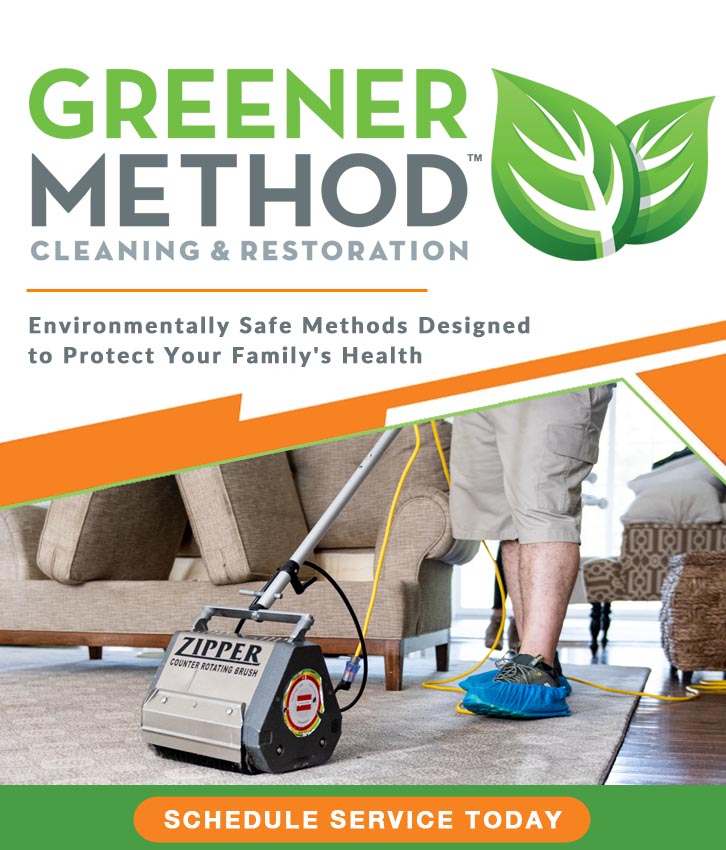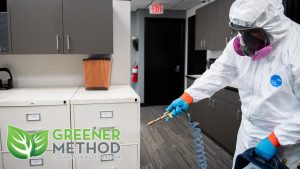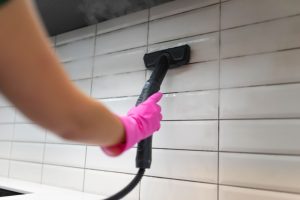[vc_row][vc_column][vc_column_text]Industrial cleaning is a critical aspect of maintaining a safe and efficient working environment. Traditionally, this process has relied on harsh chemicals and methods that not only pose risks to the environment but also endanger the health of workers. In recent years, there has been a growing awareness of the need for a greener approach to industrial cleaning – one that is safe, effective, and sustainable.
Traditional Industrial Cleaning Methods
Harsh Chemicals and Their Drawbacks
Traditional industrial cleaning often involves the use of strong chemicals to break down contaminants. While these chemicals are effective in cleaning, they come with significant drawbacks. The release of harmful fumes can jeopardize the health of workers, and the disposal of these chemicals contributes to environmental pollution.
Environmental Impact
The environmental impact of traditional cleaning methods is undeniable. Chemical runoff contaminates water sources, and air pollution from volatile compounds adds to the global burden of pollutants. As industries face increasing scrutiny regarding their environmental practices, a shift towards greener alternatives becomes imperative.
Health Risks for Workers
Workers involved in industrial cleaning are exposed to various health risks when dealing with harsh chemicals. Respiratory issues, skin problems, and other ailments are common among those using traditional cleaning methods. The need to prioritize the well-being of workers is a driving force behind the adoption of greener alternatives.
The Need for Greener Alternatives
Growing Awareness of Environmental Issues
With increasing awareness of climate change and environmental degradation, businesses are under pressure to adopt sustainable practices. Consumers, too, are demanding accountability from the industries they support. The shift to greener industrial cleaning methods aligns with these expectations, fostering a positive image for businesses.
Regulatory Pressure to Adopt Sustainable Practices
Governments and regulatory bodies worldwide are introducing stricter environmental regulations. Industries that fail to comply face fines and other penalties. The adoption of greener cleaning methods not only ensures compliance but also positions businesses as responsible stewards of the environment.
The Greener Method Approach
Definition and Principles
The greener method approach to industrial cleaning emphasizes the use of environmentally friendlyagents and processes. It prioritizes sustainability, safety, and efficiency in cleaning practices. Key principles include minimizing waste, using non-toxic substances, and implementing methods that have a reduced environmental impact.
Key Components of the Approach
- Biodegradable Cleaning Agents: The use of biodegradable detergents and solvents ensures that the cleaning process leaves no lasting environmental footprint. These agents break down naturally, preventing soil and water pollution.
- Water Conservation Techniques: Greener methods focus on optimizing water usage. Technologies like high-pressure, low-flow systems reduce water consumption while maintaining effective cleaning results.
- Renewable Energy Integration: To further reduce the carbon footprint, the greener approach often involves the integration of renewable energy sources. This includes utilizing solar or wind power for industrial cleaning processes.
Advantages of Greener Industrial Cleaning
Environmental Benefits
The positive impact of adopting greener industrial cleaning practices on the environment cannot be overstated. From reduced chemical pollution to minimized water waste, these methods contribute to a healthier planet.
Health and Safety Improvements
A significant advantage of the greener method is the improved health and safety conditions for workers. With fewer harmful chemicals in use, the risk of respiratory and skin issues decreases, creating a safer workplace environment.
Cost-Effectiveness in the Long Run
While the initial investment in greener technologies might seem higher, the long-term cost savings are considerable. Reduced health-related expenses, compliance with regulations, and improved public relations contribute to the overall financial benefit.
Challenges and Solutions
Common Challenges in Transitioning to Greener Methods
The shift to greener industrial cleaning practices is not without its challenges. Resistance to change, lack of awareness, and concerns about the efficacy of alternative methods are common hurdles that businesses may face.
Solutions and Best Practices
To overcome these challenges, businesses can implement comprehensive training programs, provide incentives for adopting greener practices, and gradually phase in the new methods to allow for a smooth transition.
Training and Education
Importance of Educating Workers
Education plays a pivotal role in the successful implementation of greener cleaning practices. Workers need to understand the environmental and health benefits of the greener method, as well as the proper techniques for its application.
Training Programs for Adopting Greener Practices
Companies should invest in training programs that equip their workforce with the knowledge and skills needed to transition to greener cleaning methods. This may include workshops, online courses, and hands-on training sessions.
Technology and Innovation
Role of Technology in Sustainable Industrial Cleaning
Technological advancements are instrumental in driving the adoption of greener cleaning methods. Robotics, artificial intelligence, and sensor technologies are being integrated into industrial cleaning processes to enhance efficiency and reduce environmental impact.
Innovations Driving the Greener Approach
Innovations such as microfiber cleaning materials, waterless cleaning solutions, and automated cleaning systems are at the forefront of the greener cleaning movement, offering effective alternatives to traditional methods.
Measuring Success: Metrics and Indicators
Key Performance Indicators for Greener Cleaning Methods
Quantifying the success of greener cleaning initiatives requires the establishment of key performance indicators (KPIs). These may include tracking the reduction in chemical usage, water consumption, and the overall carbon footprint. Regular assessments using these indicators enable businesses to gauge the effectiveness of their greener cleaning initiatives.
Future Trends in Industrial Cleaning
Emerging Technologies and Methods
As industries continue to evolve, so does the field of industrial cleaning. Emerging technologies like nanotechnology, advanced sensors, and robotics are poised to revolutionize the efficiency and sustainability of industrial cleaning processes.
Anticipated Changes in Regulations
The global push towards sustainability is likely to lead to more stringent regulations regarding industrial cleaning practices. Companies that proactively adopt greener methods will be better positioned to comply with future requirements, staying ahead of the regulatory curve.
Corporate Social Responsibility (CSR)
The Role of Businesses in Promoting Greener Methods
Corporate Social Responsibility goes beyond mere compliance; it involves actively contributing to the betterment of society and the environment. Businesses adopting greener cleaning practices demonstrate a commitment to sustainable development and social responsibility.
Building a Positive Public Image
Consumers increasingly seek products and services from companies aligning with their values. A commitment to greener industrial cleaning not only fulfills environmental and ethical expectations but also builds a positive public image, fostering customer trust.
Public Perception and Acceptance
Shifting Attitudes Toward Sustainable Practices
As awareness of environmental issues grows, public attitudes towards sustainable practices are shifting. Consumers are becoming more discerning, preferring products and services from companies that prioritize environmental responsibility.
Consumer Preferences Influencing Industrial Choices
The demand for eco-friendly products extends beyond the consumer market to influence industrial choices. Businesses are now more inclined to partner with suppliers and service providers who share their commitment to sustainability, creating a ripple effect throughout the supply chain.
Global Initiatives and Collaborations
International Efforts Toward Sustainable Industrial Practices
Globally, initiatives and collaborations are underway to promote sustainable industrial practices. International organizations, governments, and industry associations are working together to establish standards and guidelines for greener cleaning methods.
Collaborations Between Industries and Environmental Organizations
Partnerships between industries and environmental organizations are becoming more common. These collaborations facilitate the exchange of knowledge, resources, and best practices, fostering a collective effort towards a more sustainable future.
Conclusion
In conclusion, the greener method approach to industrial cleaning is a crucial step towards creating a safer, more sustainable future. By prioritizing environmentally friendly practices, businesses not only contribute to global efforts to combat climate change but also enhance their own success through cost savings, improved worker health, and positive public perception.
[/vc_column_text][/vc_column][/vc_row]















